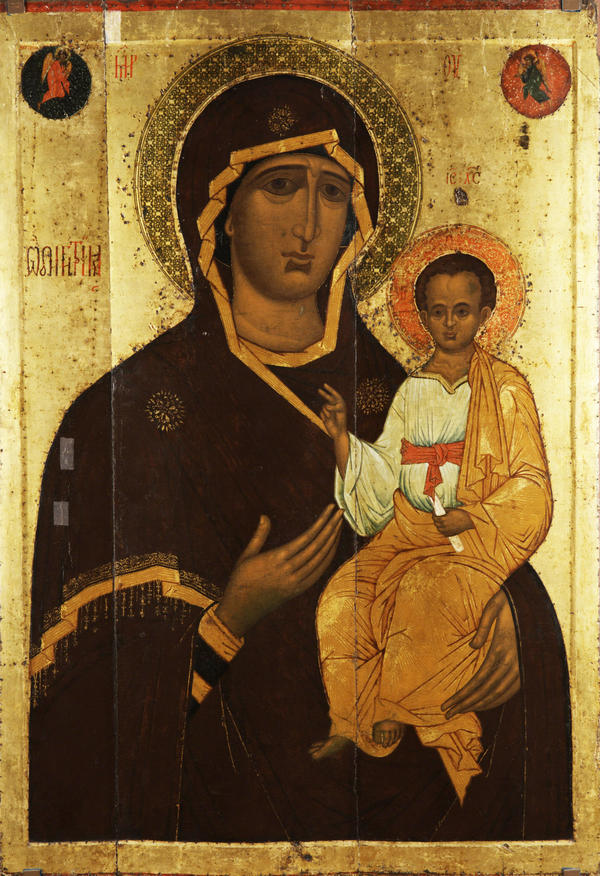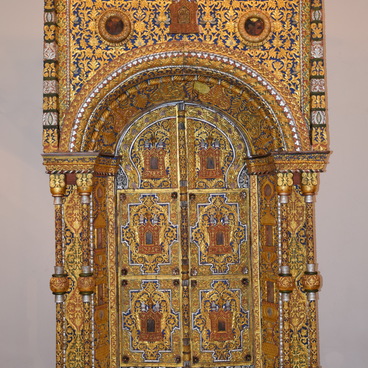This is a Hodigitria type of icons. Hodigitria is the Greek for she who points the way. The Holy Virgin Hodigitria is among the oldest, austere, and solemn images of God’s Mother. The Child Jesus in the icon is shown as the Pantocrator, which is a distinctive feature of the image: his right hand makes a blessing gesture, his left hand holds a scroll. In Hodigitria type of icons, the Holy Virgin normally points to her Son as if invoking worship of Him by praying. The Holy Virgin’s look is cast on those praying.
Holy Virgin Hodigitria
Creation period
mid-16th century
Dimensions
138x95 cm
Technique
tempera
Collection
Exhibition
9
Open in app#1
Unknown author
Holy Virgin Hodigitria
#7
#8
The icon artist used solid and deep tints and contrasting colour combinations. Mary’s cloak, a cherry brown kerchief, is decorated with a yellow-ochroid hem, fringe, and golden stars. Her cap is dark blue, almost black. Christ’s clothes are much lighter and brighter in colour: the artist used light green, red, and ochroid shades. The Holy Virgin’s face is rimmed with a thin gold line. The monumental figures of the Virgin and Christ are very distinctive against a solid gold background. One peculiarity of Yaroslavl icon painting is depicting two angels in cloud circles. The carry the instruments of Christ’s sufferings — the cross, the reed, and the lance, anticipating Christ’s forthcoming passions.
#9
According to a legend, the original icon of the Holy Virgin Hodigitria was painted by Luke, the evangelist, and the blessing of the icon came from the Holy Virgin herself. The legend dates back to Byzantine written records of the 8th century. Originally, the icon was kept in Jerusalem, later it was brought to Constantinople. In Byzantium, Hodigitria was worshipped as the protector and patroness of the capital city.
#10
Numerous copies of the icons were viewed as wonder-working. One of them was brought to Kievan Russia by Anna, the daughter of the Byzantine Emperor Constantine Monomachos, in the 11th century. In the early 12th century, the icon was in the Smolensk Dormition Cathedral, the principal church of the city, where it won the glory of a miracle making icon. In the early 15th century, it was brought to Moscow but soon returned to Smolensk as requested by the citizens. Before the return, a copy was made for the Annunciation Cathedral; since then, it has been known as Hodigitria of Smolensk, just like all subsequent copies.
#11
The icon exhibited by the Yaroslavl Museum Reserve is a copy of that old Smolensk icon. It was kept by the Yaroslavl Monastery of the Saviour. It was painted by a local artist in the middle 16th century, supposedly for the cathedral iconostasis. In 1926, it was restored by Nikolai Bryagin, an icon painter and restoration artist.
#12
Yaroslavl Museum Reserve
read morehide
00:00
00:00
1x
Holy Virgin Hodigitria
Creation period
mid-16th century
Dimensions
138x95 cm
Technique
tempera
Collection
Exhibition
9
Open in app
Share


